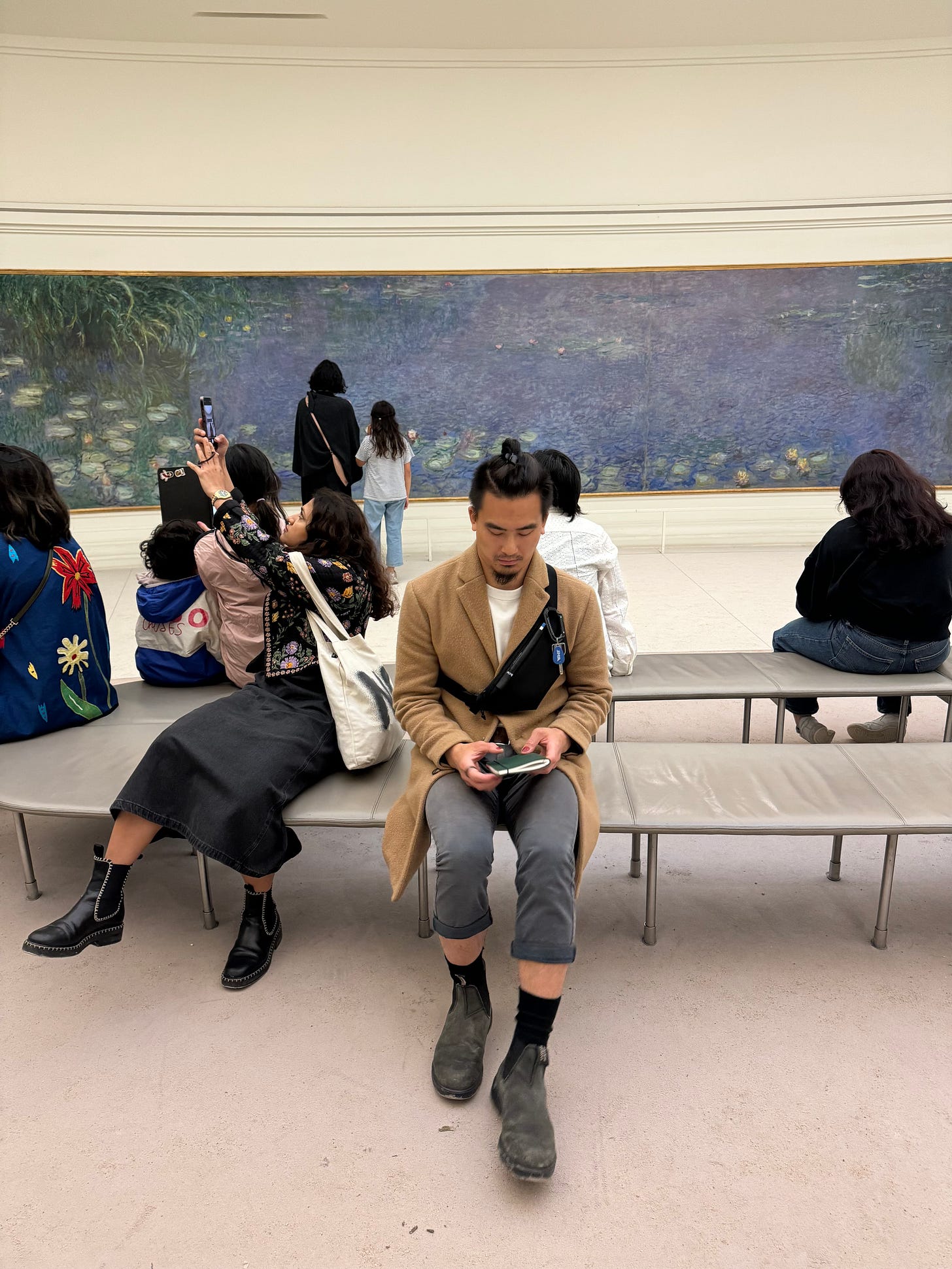A younger version of myself never understood why people got memberships to museums.
The answer is probably simple. There’s something at the museum that they like, and it’s great to be able to look at it several times a year or more.
A less romantic answer is that it’s economical (an over-complicated reason I would’ve opted for). Museums frequently have different exhibits every quarter, so having a membership lets patrons slip in and out without continually paying a la carte. Certain museums, such as the Lourve, are also humongous and to get through everything you want to see, it’s best to come back multiple times.
I was living in Paris for a short period of time last year and can tell you with no hesitation that I’m not really a museum kind of guy.
Despite this knowledge of myself, Musée de l’Orangerie was the one museum that I surprisingly went to twice in the span of a couple weeks. Twice was new for me, especially since I’ve always held the “economical” viewpoint. Musée de l’Orangerie was small. The entire museum could probably be covered in two hours or less, making frequent visits seemingly unnecessary.
One of the main attractions of Musée de l’Orangerie is eight large works of Claude Monet’s Water Lilies. The exhibition is in two oval sized rooms and there is a sign that recommends enjoying it in silence.
The first time I went, I spent about fifteen minutes in each room. Most of it was dodging Instagram influencers and the over-crowdedness of the afternoon rush. Despite the polite request to enjoy the piece in “silence”, there still was a significant amount of noise and talking.
Every 2-3 minutes, a museum porter would shush the loudest group closest to her, and the volume would drop significantly. Of course this game would continue as new people trickled in and old people trickled out. An irritating job, for sure, but I appreciated her gusto. The art demanded it. For some reason, there’s always some entitled asshole who revels in being there but fails to actually be there, if you catch my drift.
I was clearly drawn to these rooms. There was some combination of open-eyed meditation going on, journaling in my notebook, sketching things I liked on the paintings, and a constant observation and re-observation of new details that were popping up. Sometimes I closed my eyes briefly, only to open them again and see another unseen lily in a slightly different light.
There were these flat oval benches that they provided so I could just swivel my legs to the other side to view what was behind me. I’d glance to my left and to my right for a different perspective, all the while holding the gaze of my mind’s eye towards the details. The darker blues and the white wispy reflections gave way to the green algaes and grass, where the lilies took on a different life.
I would pay again and again to experience the lilies because I needed more time for the external details and my internal feelings to mix. It helps to stay in one place and watch the changes happen. You might not think anything changes. It is a painting after all. But if you stay still long enough, you’ll notice things you didn’t notice before, and even if you’re looking at something externally static, you, as a person, are changing internally. Your experience each time will change, ever so slightly. It’s this meditative act of feeling the infinitesimal shift that makes it worth it.
So why now? Why didn’t I write about this before?
My partner recently found this artist named Thomas Brossard that does these kind of cute “people in famous museum” depictions, and well, there’s a piece that captures the essence of what I experienced. It just took me back.
I think any artist would love to hear that their drawing elicited such a response. His picture is very meta. To me, it wasn’t so much the fame of Claude Monet’s drawings, it was the entirety of my experience. Sitting in the Musée de l’Orangerie, meditating, writing, and using the paintings as a conduit into my own brain. For that, I thank Monet.
I can’t fly the 6k miles to Paris every time I want this feeling, so I keep a copy of this drawing digitally in my more oft-used notepad, so it’s the first thing I see in the morning when I wake up and turn on my computer.
I’d like to think it achieves the same effect. At worst, it’s just a small reminder. For that, I thank Brossard. It’ll tide me over until I can either get a real copy of either, or move back to Paris.
But really, this is just to say that all that matters as it pertains to museums and art is how a piece makes you feel. If you like it and want to come back to it over and over again, that is your prerogative. That is as noble a reason to get a museum membership. For anyone, the mere fact that you were able to discern that you liked it and that it evoked some emotion in you is exactly what artists want out of a seeker.
So I ask myself sometimes, am I really not a museum guy? ✌️





pretty sure you're a museum guy now if you're writing about whether or not you're a museum guy :-)